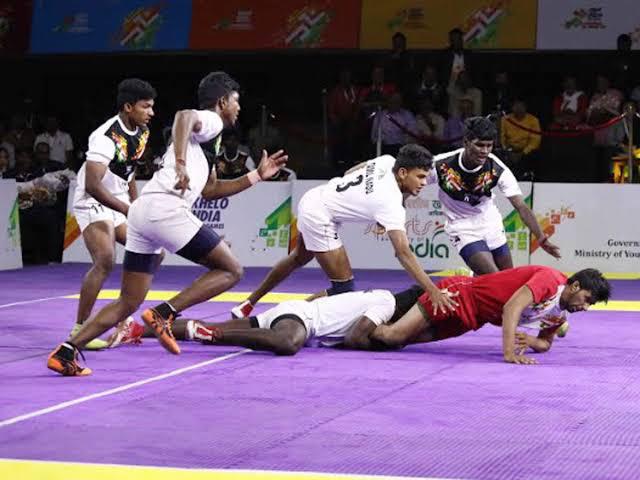
The back mount is the most dominant position in BJJ. It allows you to set up your attacks without your opponent peripherally seeing how you set them up. Because of this, opponents will rely on their experiences and instincts to defend. While having someone controlling your back is a disadvantage, don’t let it stop you from setting some attacks that may change the course of action or even end the match.
Attacks When The Opponent Has The Back Mount
Usually, having someone on your back puts you in a defensive position. While your first instinct is to protect your neck and prevent the opponent from submitting you, keep in mind that the opponent cannot focus on two things. This means that if an opponent is focused on attacking your upper body with their hands, they don’t have as much attention to use their lower body to control you, and vice versa.
Being aware in moments of defending the back mount is crucial, as sometimes it can give you openings for attacks in split seconds. Let’s look at some offensive techniques against the opponent when they have you in the back mount.
1) Foot Lock
A common principle to keep in mind while in the back mount is to never cross your feet. While sometimes crossing them in quick seconds is beneficial for control, it is not advisable to lock them for long periods. The footlock is one of the most common attacks to expect when someone controls you from behind.
When the opponent has their hooks from behind and crosses their feet, a typical reaction is to cross your feet on top of the opponent’s feet and bridge up with your hips to finish the foot lock. While this sometimes works in a split second, opponents who are flexible and filled with adrenaline, especially during competitions, may endure this foot lock attempt.
To effectively submit the opponent with the foot lock, use your left leg to step over if they have their right foot on top as they cross. Use your right foot to lock on top of your left leg like a triangle. While this can be enough to submit the opponent as you bridge, a critical detail is to have one of your arms push down on top of the opponent’s right knee, which is why you must first secure your defense from the chokes.
Finish the foot lock by extending your upper body down and bridging with your hips. Push the opponent’s top knee down as you lock your legs over their crossed feet.
2) Reversal From The Seatbelt Grip
When you’re in a turtle position, and the opponent controls your back with a seatbelt grip or controls your far arm with a wrist control to set up their hooks, their goal is to flatten you out or roll you into back mount. You can do a quick reversal to prevent them from advancing and put you in side control instead.
From the turtle, as the opponent grabs your right wrist with their right hand, you can use your right elbow to hook and trap the opponent’s right triceps and control their wrist. If you can’t reach their right triceps with your elbow, you can focus on controlling their right elbow instead. While controlling the opponent from this position, create space between your hips and the opponent’s hips, and roll on your right side.
Doing so lands you in the top side control in a reverse kesa gatame, and as you land on top, make sure to secure the position.
3) Straight Armlock
Effective hand-fighting skills when the opponent has your back can slow down their attacks and create openings for your escape. Even more so, good control over the opponent’s arm when they have your back allows you to apply a straight armlock that they may not foresee.
If the opponent puts their right arm up (opponent’s choking arm) on top of your right shoulder, catch their wrist using your left hand and drag it under your right armpit. Trap the opponent’s right arm using your right arm on top, around their right triceps, hooking their arm around. Go down on your right side and grab your left wrist using your right hand as your left hand grabs the opponent’s right wrist (trapped arm) to form a figure-four grip. Push down to finish the submission.
4) Kneebar
To set up the kneebar when the opponent has your back, you must first pummel inside their seatbelt grip and have both their arms below your armpit to prevent getting choked. When attacking the right leg, bring your left arm underneath the opponent’s left knee to prepare for a hip escape. Fall to your left side and escape with your hips facing the left and towards the ceiling as you tripod your feet.
While on a tripod, step over your right leg over the opponent’s right leg by swinging it back and on top. Triangle your legs together as you land to catch and trap the opponent’s right leg. Make sure your hip is on top of the opponent’s right leg, and from there, finish with the kneebar by pulling their heel up.
5) Baseball Choke
The baseball choke can be applied from different positions, such as the closed guard, back mount, bottom side control, or even when the opponent passes the guard with the over-under. Typically, holding on to a baseball choke exposes your back, and the opponent may take the opportunity to get the back mount in the process. But when the opponent does take your back, don’t let go of your attempt, as sometimes they may unknowingly get caught in the choke, even if they have your back.
To perform the baseball choke, use your left hand to grab inside deep the opponent’s right collar with four fingers inside the lapel and your forearm beside their carotid artery across their neck. Your right hand grabs the lapel behind the opponent’s neck. You can finish by going belly down on your knees, which may expose your back to the opponent.
Final Thoughts
While many consider the back the most vulnerable position in grappling, don’t let someone on your back stop you from playing on your offense. While lower body attacks may be available, always prioritize defending the choke when your opponent has your back before advancing for a counterattack!
You may also like:
7 Underutilized Submissions That You Should Add to Your Game
If you’ve ever watched a fight and thought, “Wow, this guy never backs off?” You’ve witnessed pressure fighting in action. Pressure fighting in martial arts is the art of making your opponent miserable with constant…
The countless chokes you learn in Brazilian Jiu-Jitsu are a massive part of what makes it such a fun martial art. While most BJJ techniques were developed to be performed on opponents wearing Gis, many…
BJJ constantly evolves with new techniques and forgotten ones being rediscovered. While classic submissions are staples in every grappler’s arsenal, many lesser-used techniques can catch opponents off guard and open up new attacking opportunities. Focusing…
In Brazilian Jiu-Jitsu, the ability to control an opponent and dictate the pace of a match is just as important as finishing a submission. Many practitioners focus heavily on submissions, but without solid positional control,…
Many strikers don’t think they need to learn how to wrestle until they feel what it’s like to battle a strong grappler. Striking and grappling are the two opposite ends of martial arts training, and…
The armbar is one of the most powerful and versatile submissions in BJJ. It is a fundamental technique taught to beginners yet remains a favorite among advanced practitioners and world champions. The armbar is effective…
Hard sparring sessions in martial arts can make you feel like you’ve just walked through a brick wall. You’ve given it your all, and your muscles are sending you a strongly worded memo saying that…
Martial arts legends can inspire children—or anyone else—to dedicate themselves to learning more about these ancient arts. Children typically have short attention spans, but they’ll sit through exciting stories about warriors battling tigers with bare…
Solo activities are wonderful for those looking to get out and explore the city on their own. Perhaps you just want to indulge in a good workout session to escape from your daily routine and…
Nothing feels as rewarding as landing a well-executed strike that finishes the match or secures a win. The knockout is the crème de la crème of combat sports like mixed martial arts (MMA), Muay Thai,…
Boxing is often referred to as “the sweet science” because it is more than just throwing punches. Boxing is about precision, timing, and strategy to scientifically defeat the opponent. While fundamental techniques are the core…
A loss during competition sometimes feels like a sucker punch to your ego. One minute, you’re on top of the world and questioning every decision you made during the match—and maybe even in life—the next…





































